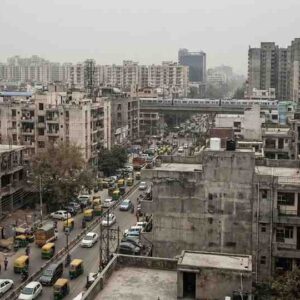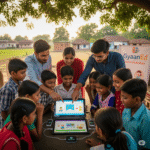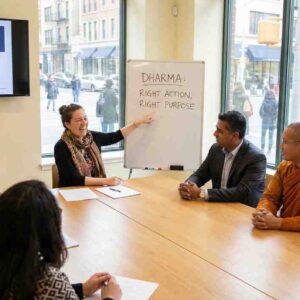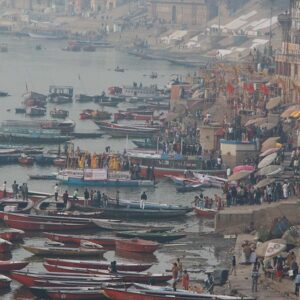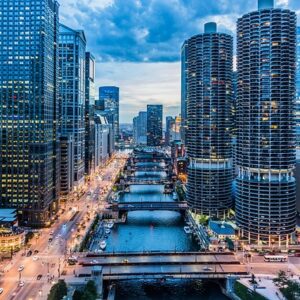“A Journey of Justice and Inclusion: The Power of the Marginalized in India’s Democracy”
India, a nation with one of the largest populations in the world, has always prided itself on its democratic ideals of justice, equality, and representation. However, for many years, large sections of society—especially the marginalized—were left out of the political, economic, and social spheres. Over the years, however, India’s democracy has undergone a silent revolution, where the voices of the marginalized have grown louder, and their representation has significantly increased. The country’s democratic processes have played a crucial role in elevating these groups, ensuring that every citizen has the opportunity to contribute to the nation’s progress. This article explores how India’s democracy has empowered marginalized communities, from affirmative action policies to political representation.
India’s Democracy: A Framework for Empowerment
- The Foundation of Inclusive Democracy
- India’s Constitution, adopted in 1950, laid the foundation for a democracy that recognizes the importance of social justice. Enshrining equality before the law, it provided for affirmative action policies aimed at uplifting those who had been historically excluded from the mainstream. This inclusivity remains central to India’s democratic fabric, as it seeks to ensure that the voices of marginalized groups are heard and their needs are met.
- Affirmative Action: Ensuring Representation
- One of the most powerful tools for empowering marginalized communities in India has been affirmative action. The Reservation System, which mandates quotas for Scheduled Castes (SC), Scheduled Tribes (ST), and Other Backward Classes (OBC) in educational institutions and government jobs, has played a transformative role in reducing historical inequalities.
- In the 2021 Census, more than 16.6% of India’s population identified as Scheduled Castes and 8.6% as Scheduled Tribes, making affirmative action essential for their inclusion in the workforce and higher education. While the reservation system has faced criticism, it has undeniably contributed to increasing representation and opportunities for these communities.
Key Metrics of Empowerment
- Increased Political Representation
- Over the years, political representation for marginalized communities has grown significantly. In the 2019 Lok Sabha elections, nearly 80 MPs were from Scheduled Castes, Scheduled Tribes, and Other Backward Classes. This number marks a shift from earlier years when these communities had minimal representation in the Parliament.
- The Women’s Reservation Bill—currently being debated in Parliament—further highlights India’s efforts to enhance the political empowerment of marginalized groups, particularly women, who have historically been underrepresented in politics.
- Access to Education and Employment
- Affirmative action in education has resulted in greater enrollment from marginalized communities in prestigious institutions. The percentage of students from SC, ST, and OBC backgrounds in IITs and IIMs has steadily increased, offering them opportunities for upward mobility.
- Additionally, government policies aimed at providing free or subsidized education and vocational training programs have opened doors for millions, reducing socio-economic disparities.
- Economic Inclusion Through Welfare Programs
- India’s welfare programs, such as the Mahatma Gandhi National Rural Employment Guarantee Act (MGNREGA), have played a vital role in empowering marginalized communities. MGNREGA, which guarantees 100 days of employment annually to rural households, has provided employment to millions, particularly from marginalized groups. In 2021, approximately 60% of the beneficiaries of MGNREGA were women, highlighting its impact on empowering rural women.
- Other programs like Pradhan Mantri Awas Yojana and Jan Dhan Yojana (financial inclusion) further ensure that marginalized groups have access to housing, banking services, and economic opportunities.
The Challenges to Full Empowerment
- Persisting Inequalities
- While there has been significant progress, marginalized communities continue to face barriers to full empowerment. Social stigma, caste-based discrimination, and limited access to quality education and healthcare still hold back many individuals, despite government policies.
- According to the World Bank, around 22% of India’s population still lives below the poverty line, with the majority coming from marginalized backgrounds. The government’s focus on inclusive growth remains essential to overcoming these challenges.
- Political Fragmentation
- While representation in politics has improved, political fragmentation often hinders the collective strength of marginalized groups. Divisive politics, often based on caste, region, and religion, can undermine efforts to ensure equality. Strengthening civic engagement and fostering cross-community collaboration remains vital for building a more cohesive society.
The Resilient Power of Democracy
- Grassroots Movements and Social Change
- India’s democracy has also been shaped by grassroots movements that have amplified the voices of the marginalized. Movements like Narmada Bachao Andolan (Save Narmada Movement) and Right to Information Act (RTI) activism have been driven by marginalized communities who fought for their rights to resources and transparency.
- These movements are a testament to how India’s democratic system empowers people to fight for their rights and demand social change, with the judiciary, media, and civil society playing crucial roles in upholding these demands.
- Judicial Oversight and Protection of Rights
- India’s judiciary has played an instrumental role in protecting the rights of marginalized communities. Landmark Supreme Court rulings, such as the decriminalization of homosexuality (2018) and the right to dignity for individuals from lower castes, have reinforced the country’s commitment to social justice.
- The judiciary’s role in upholding the rights of marginalized communities ensures that they are not left behind in the face of political or economic challenges.
Conclusion: The Silent Revolution of Empowerment
India’s democracy, while not without its flaws, has become a powerful tool for empowering marginalized communities. Through affirmative action, political representation, social welfare programs, and grassroots movements, India has made significant strides in ensuring that every voice, no matter how marginalized, counts.
However, the journey is far from over. Challenges such as caste-based discrimination, economic inequality, and political fragmentation still persist. As India continues to grow and evolve, it must focus on further strengthening its democratic institutions, fostering inclusion, and ensuring that the benefits of democracy are felt by all.

